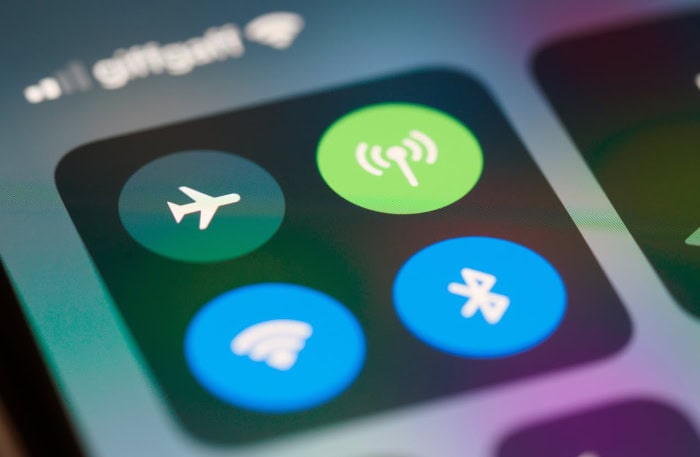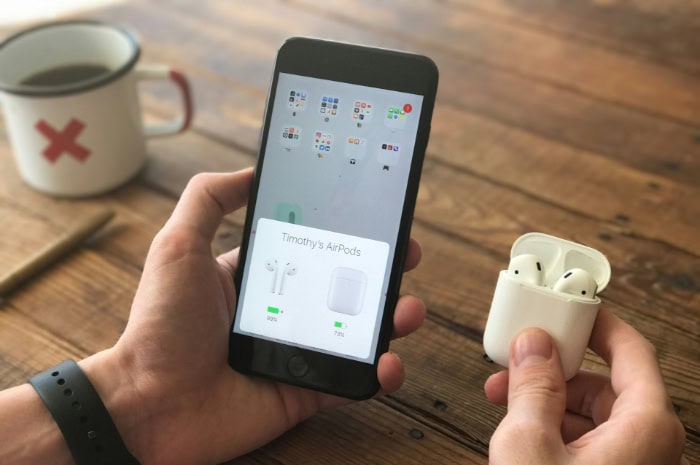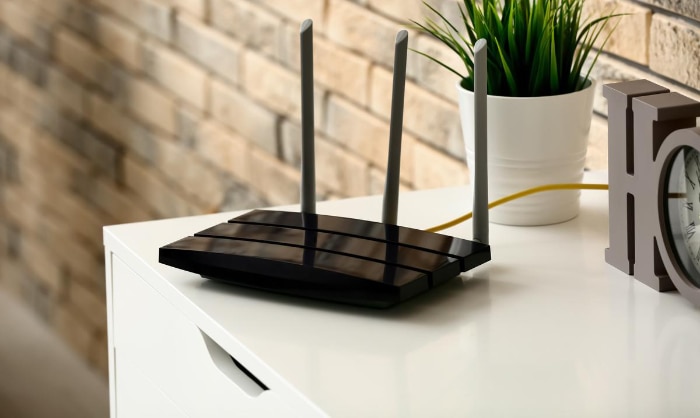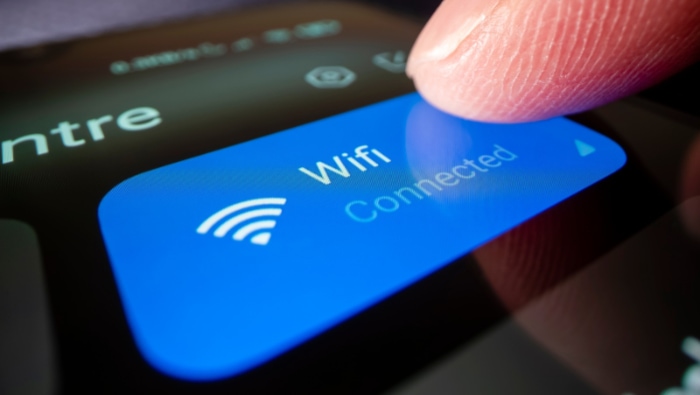The Difference Between Bluetooth and Wi-Fi: Explained

Behind millions of wireless connections happening right now, two distinct technologies silently power our modern gadgets. Bluetooth and Wi-Fi might seem similar at first glance – after all, both eliminate the need for cables – but they serve vastly different roles in our daily tech interactions.
From your smartwatch tracking your morning run to your laptop streaming a 4K movie, these wireless standards work in harmony to create seamless experiences. Yet, choosing between them isn't always straightforward.
Some tasks demand the energy-efficient, close-range capabilities of Bluetooth, while others require Wi-Fi's robust internet connectivity and faster speeds.
Functionality and Purpose
Bluetooth and Wi-Fi serve distinct roles in our daily wireless interactions, each optimized for specific tasks and scenarios. These technologies complement each other rather than compete, filling different needs in our connected lives.
Bluetooth Functionality
Bluetooth technology specializes in creating short-range wireless connections between devices. It excels at maintaining stable, direct device-to-device links without requiring complex network infrastructure.
Think of Bluetooth as a wireless replacement for cables, perfect for connecting peripherals to your main devices.
Common applications of Bluetooth surround us daily. Your wireless earbuds connect seamlessly to your phone, delivering music without tangled wires.
Fitness trackers silently sync activity data to your smartphone throughout the day. Wireless keyboards and mice respond to your inputs without lag, while car hands-free systems automatically connect to your phone as you enter your vehicle.
These personal area networks (PANs) represent Bluetooth at its finest – simple, reliable connections between nearby devices.
Wi-Fi Functionality
Wi-Fi operates on a grander scale, creating wireless networks that connect multiple devices to the internet and each other. Unlike Bluetooth's direct connections, Wi-Fi relies on central access points or routers to manage network traffic and provide internet connectivity.
In homes, Wi-Fi networks allow families to stream videos, play online games, and browse the web simultaneously from different rooms. Businesses depend on Wi-Fi to connect employees' laptops to company servers, enable cloud-based applications, and provide guest internet access.
Public spaces like cafes, airports, and libraries offer Wi-Fi hotspots, allowing visitors to stay connected while on the move.
Wi-Fi's versatility extends beyond basic internet access. Modern smart homes utilize Wi-Fi to control security cameras, thermostats, and lighting systems.
Video conferencing platforms rely on Wi-Fi's higher bandwidth to transmit high-quality audio and video streams. Large file transfers between computers on the same network happen quickly and efficiently through Wi-Fi connections.
The technology's ability to handle multiple simultaneous connections and maintain consistent performance under heavy loads makes it indispensable in today's connected environments. While Bluetooth connects your devices to each other, Wi-Fi connects your devices to the world.
Range and Speed

Range and speed capabilities represent two fundamental differences between Bluetooth and Wi-Fi technologies. These factors significantly influence how and where each technology can be effectively used.
Range Capabilities
Bluetooth operates within relatively modest distances, with most devices functioning optimally within 30 feet (10 meters) of each other. However, newer Bluetooth 5.0 and later versions can reach up to 800 feet (240 meters) under perfect conditions.
Real-world performance typically falls shorter due to physical obstacles like walls, furniture, and electronic interference.
Different Bluetooth classes offer varying range capabilities. Class 1 devices, often found in industrial settings, can reach up to 330 feet (100 meters).
Class 2 devices, the most common in consumer electronics, operate effectively within 33 feet (10 meters). Class 3 devices have the shortest range at just 3 feet (1 meter), typically used in small accessories like wireless earbuds.
Wi-Fi, by comparison, offers substantially greater range. A standard home Wi-Fi router can typically cover 150 feet (46 meters) indoors and up to 300 feet (92 meters) outdoors.
Professional-grade Wi-Fi equipment can extend this range significantly, especially when using multiple access points or range extenders. Modern mesh Wi-Fi systems can blanket large homes or offices in consistent coverage by using multiple interconnected nodes.
Speed Performance
Bluetooth and Wi-Fi demonstrate dramatic differences in data transfer speeds. Traditional Bluetooth (versions 1-3) supports speeds up to 3 Mbps, suitable for transmitting audio signals or small files.
Bluetooth 4.0 introduced improvements, while Bluetooth 5.0 pushed speeds up to 50 Mbps. This makes Bluetooth perfect for tasks like streaming music to wireless speakers or sending files between phones.
Wi-Fi speeds exist in an entirely different league. The latest Wi-Fi 6 (802.11ax) standard achieves theoretical speeds up to 9.6 Gbps, though real-world speeds typically range from 100 Mbps to 1 Gbps depending on your internet service and equipment.
Even older Wi-Fi 5 (802.11ac) networks can deliver speeds up to 3.5 Gbps. These high speeds enable bandwidth-intensive activities like 4K video streaming, online gaming, and large file transfers.
The speed difference explains why Wi-Fi handles your home internet connection while Bluetooth manages your wireless mouse. Wi-Fi's superior bandwidth makes it ideal for data-heavy tasks, while Bluetooth's lower speeds suffice for simpler device-to-device communications.
Power Consumption

Power efficiency plays a crucial role in how wireless technologies function in our portable devices. The power consumption differences between Bluetooth and Wi-Fi directly affect battery life and determine which technology best suits specific applications.
Bluetooth Power Usage
Bluetooth stands out for its remarkably low power consumption, making it ideal for small, battery-powered devices. Standard Bluetooth typically draws between 1 and 100 milliwatts during active use, allowing devices like wireless earbuds to operate for many hours on tiny batteries.
Bluetooth Low Energy (BLE) takes power efficiency even further. Introduced with Bluetooth 4.0, BLE consumes only a fraction of the power needed by classic Bluetooth.
This technology enables devices like fitness trackers and smartwatches to run for days or weeks on a single charge while maintaining constant connectivity. BLE achieves this efficiency by transmitting data in short bursts rather than maintaining continuous connections.
The power-saving features of BLE have transformed the Internet of Things (IoT) market. Smart home sensors, medical devices, and environmental monitors can operate for months or even years on small coin cell batteries.
This extended battery life proves particularly valuable in devices that need to maintain long-term connections while remaining compact and maintenance-free.
Wi-Fi Power Usage
Wi-Fi technology requires significantly more power than Bluetooth, primarily due to its longer range and higher data transmission rates.
A typical Wi-Fi radio in a smartphone might consume between 300 and 700 milliwatts during active use, which explains why streaming videos over Wi-Fi drains your phone battery much faster than listening to music through Bluetooth headphones.
Modern Wi-Fi devices incorporate various power-saving mechanisms to reduce battery drain. These include sleep modes, where the Wi-Fi radio powers down during periods of inactivity, and targeted wake time features that schedule precise moments for data transmission.
However, even with these optimizations, Wi-Fi still consumes substantially more power than Bluetooth.
The higher power requirements of Wi-Fi become particularly noticeable in portable devices. Laptops typically show significantly reduced battery life when using Wi-Fi extensively, especially during high-bandwidth activities like video streaming or large file downloads.
Mobile phones manage this power demand by automatically switching to cellular data when Wi-Fi signals are weak, as searching for and maintaining a weak Wi-Fi connection can be particularly power-intensive.
For stationary devices connected to constant power sources, Wi-Fi's higher power consumption poses little concern. However, for battery-powered devices, the choice between Wi-Fi and Bluetooth often involves balancing power efficiency against performance requirements.
Small sensors and accessories benefit from Bluetooth's power efficiency, while devices needing constant internet connectivity must accept Wi-Fi's higher power demands.
Security Features

Security remains a top priority for both Bluetooth and Wi-Fi technologies, as wireless communications face various threats from potential attackers. Both technologies employ different approaches to protect user data and prevent unauthorized access.
Bluetooth Security
Bluetooth security has evolved significantly since its inception. Modern Bluetooth implementations use several layers of security to protect communications between devices.
The primary security feature starts with the pairing process, which establishes a trusted relationship between devices.
Secure Simple Pairing (SSP) represents the standard method for connecting Bluetooth devices. This protocol uses advanced encryption methods and requires user confirmation before establishing connections.
During pairing, devices exchange unique codes and create encrypted links, making it difficult for attackers to intercept communications.
Bluetooth 4.0 and later versions incorporate Advanced Encryption Standard (AES) technology, providing robust protection for data transmissions.
Additionally, Bluetooth devices can operate in various security modes, allowing users to balance convenience with protection levels. Private address features help prevent device tracking by regularly changing the Bluetooth address broadcast by devices.
However, Bluetooth isn't without vulnerabilities. The limited range of Bluetooth actually serves as a security advantage, as potential attackers must be physically close to target devices.
Users should remain cautious about accepting connection requests from unknown devices and disable Bluetooth when not in use to minimize exposure to potential threats.
Wi-Fi Security
Wi-Fi security protocols have undergone substantial improvements to combat sophisticated cyber threats. Modern Wi-Fi networks primarily rely on Wi-Fi Protected Access (WPA) protocols to secure communications between devices and access points.
WPA2 has served as the standard security protocol for many years, utilizing strong encryption to protect network traffic. This protocol requires all devices to authenticate before joining the network and encrypts all data transmitted over the air.
The newer WPA3 protocol introduces even stronger protection, including enhanced password-based authentication and improved encryption methods.
Public Wi-Fi networks present particular security challenges. Unlike home or office networks, public hotspots often operate without encryption, leaving users vulnerable to various attacks.
Criminals can potentially intercept data transmitted over these networks or create fake access points to capture sensitive information.
To protect against these risks, many users employ Virtual Private Networks (VPNs) when connecting to public Wi-Fi. VPNs create encrypted tunnels for data transmission, ensuring privacy even on unsecured networks.
Modern devices also support Wi-Fi Enhanced Open, a protocol that provides some protection on public networks without requiring passwords.
Both home and business Wi-Fi networks benefit from additional security features like guest networks, which isolate visitor traffic from primary network resources, and MAC address filtering, which restricts network access to specific devices.
Regular security updates for routers and connected devices help patch vulnerabilities and maintain strong protection against emerging threats.
Connectivity and Usability

The practical aspects of connecting and using devices with Bluetooth and Wi-Fi vary significantly, affecting how people interact with these technologies in their daily lives. Both technologies offer distinct approaches to device management and configuration, each with their own advantages and limitations.
Device Connectivity
Bluetooth and Wi-Fi differ substantially in their ability to handle multiple connected devices. Bluetooth typically supports connecting up to seven devices in a single piconet (personal network), though modern versions can theoretically handle more.
However, active connections often work best with fewer devices due to bandwidth limitations and potential interference issues. A smartphone, for example, might simultaneously connect to wireless earbuds, a smartwatch, and a car system without significant performance degradation.
Wi-Fi networks, however, can support hundreds of simultaneous connections, depending on the router's capabilities and available bandwidth. Modern routers commonly handle 50-100 devices without noticeable performance issues.
Large-scale networks in offices or public spaces can accommodate even more devices through multiple access points and proper network management.
Performance considerations become crucial as the number of connected devices increases. Bluetooth devices might experience reduced audio quality or increased latency when multiple devices compete for bandwidth.
Wi-Fi networks can maintain stable connections across many devices, but each additional connection shares the available bandwidth, potentially affecting overall network speed.
Setup Complexity
Bluetooth pairing typically offers a straightforward, user-friendly process. Users simply enable Bluetooth on both devices, make one device discoverable, and confirm a connection code.
Modern implementations have simplified this further with features like Near Field Communication (NFC) tapping to pair devices instantly. Some devices, like wireless earbuds, enter pairing mode automatically when removed from their case, making the connection process nearly effortless.
The initial Bluetooth pairing process creates a lasting bond between devices, allowing them to reconnect automatically when in range. This convenience proves particularly valuable for frequently used device combinations, such as phones and car systems or computers and wireless peripherals.
Wi-Fi setup generally requires more initial configuration but offers greater flexibility once established. Users must first configure their router with network names (SSIDs) and security settings.
Connecting devices involves selecting the correct network and entering passwords, which can be more complex than Bluetooth pairing. However, modern solutions like WPS (Wi-Fi Protected Setup) buttons and QR code scanning have simplified this process.
Router configuration might intimidate less technical users, as it involves accessing administration panels and adjusting various settings. Many modern routers now include user-friendly mobile apps for setup and management, making the process more accessible.
Once configured, Wi-Fi networks typically require minimal maintenance, automatically connecting devices within range.
The complexity difference reflects the broader scope of Wi-Fi networks compared to Bluetooth's simpler device-to-device connections. While Bluetooth prioritizes quick, direct connections for personal devices, Wi-Fi focuses on creating robust, secure networks capable of handling diverse devices and applications.
Conclusion
Both Bluetooth and Wi-Fi excel in their respective domains, serving distinct purposes in our connected lives. Bluetooth's low power consumption and simple pairing make it perfect for personal devices like earbuds, smartwatches, and computer peripherals.
Its short-range capabilities actually become an advantage for security and battery life. Wi-Fi shines through its superior speed, extended range, and ability to connect numerous devices simultaneously.
Modern homes and offices rely on Wi-Fi's robust networking capabilities for everything from video streaming to cloud computing. Together, these technologies complement each other beautifully – Bluetooth handles personal device connections while Wi-Fi provides the broader network infrastructure needed for internet connectivity.
Users benefit most when leveraging both technologies according to their strengths, creating a seamless wireless experience across all their devices.


